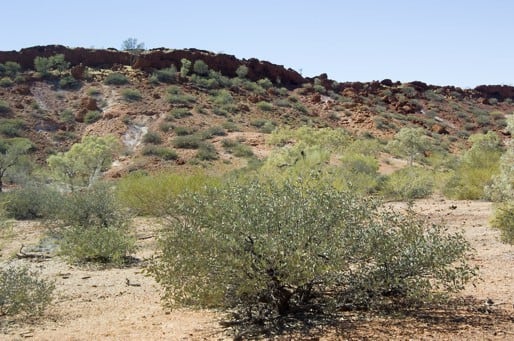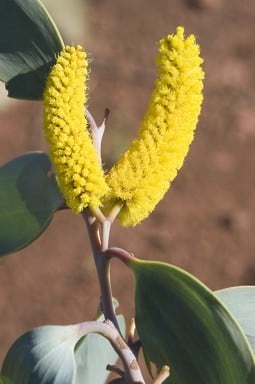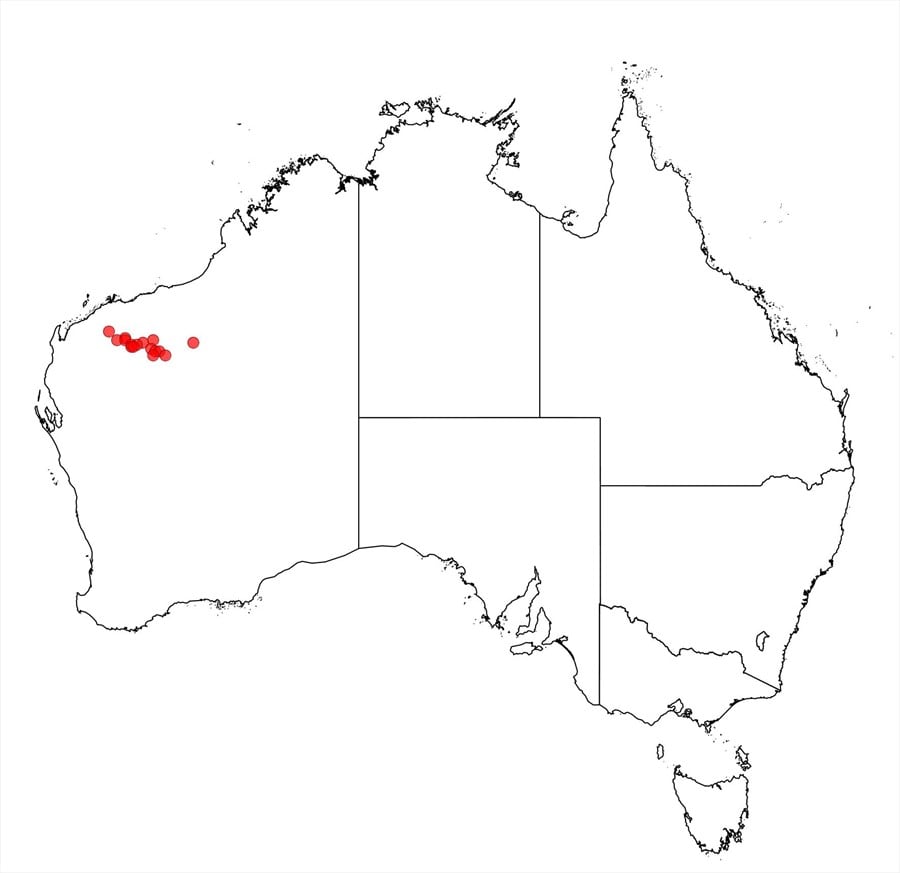Acacia bromilowiana Maslin
WATTLE
Acacias of Australia
Common Name
Bromilow’s Wattle
Family
Fabaceae
Distribution
Occurs in the Pilbara region of north-western W.A. where it is known from a few disjunct populations in the Hamersley Ra. between Tom Price and Newman, and from Balfour Downs Stn (c. 150 km NE of Newman).
Description
Shrub or tree 2–5 (–6.5) m high, occasionally 10–12 m, gnarled with sub-straight to crooked main stems. Bark fissured and fibrous, grey. Branchlets reddish, sometimes pruinose, glabrous. New shoots ferruginous by dense, microscopic hairs, soon glabrous. Phyllodes asymmetrically lanceolate to narrowly elliptic, upper margin more convex than lower, straight to shallowly falcate, (8–) 10–14 (–18) cm long, (13–) 20–40 (–45) mm wide, sub-acute to obtuse, coriaceous, grey-green to glaucous, glabrous; multistriate by fine, close nerves, few anastomosing; pulvinus (2–) 3–6 (–8) mm long, often reddish, smooth or finely wrinkled. Inflorescences normally binate racemes 5–15 mm long; peduncles 5–15 (–20) mm long, glabrous; spikes 25–45 mm long, densely flowered, light golden. Flowers 5-merous; calyx shortly dissected. Pods (few seen) narrowly oblong, 2–7 cm long, 7–10 mm wide, chartaceous, glabrous, yellowish. Seeds (few seen) longitudinal or transverse, ovate, 3.5–4 mm long, slightly shiny, brown; funicle flattened, creamy white; aril small.
Phenology
Flowers July–Aug.
Habitat
Grows in loamy soils typically high in the landscape, often with Eucalyptus spp. in spinifex country.
Specimens
W.A.: Hamersley Ra. [precise localities withheld for conservation reasons], B.R.Maslin 8784 (PERTH) and M.E.Trudgen 16164 (CANB, K, MEL, NSW, NY, PERTH); Balfour Downs Stn, S.van Leeuwen 1300 (PERTH) and B.R.Maslin 8871 (MEL, PERTH).
Notes
Appears to be most closely related to A. hamersleyensis which differs most obviously in having simple (not racemose) inflorescences, hairy peduncles and pods, citron-sericeous new shoots, normally narrower phyllodes and pods with oblique seeds, see B.R.Maslin and S.van Leeuwen, Nuytsia 18: 114 (2008), for further discussion.
Acacia bromilowiana exhibits considerable variation in growth form, see B.R.Maslin & S.van Leeuwen, Nuytsia 18: 145 (2008) for discussion. Unpublished genetic evidence suggests that most (perhaps all) occurrences in the Hamersley Ra. represent a series of clonal populations, however Balfour Downs Stn occurrences have not been tested genetically.
FOA Reference
Flora of Australia Project
Author
B.R.Maslin, J.Reid
This identification key and fact sheets are available as a mobile application:
URL: https://apps.lucidcentral.org/wattle/
© Copyright 2018. All rights reserved.












